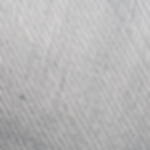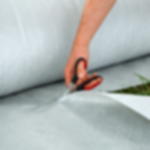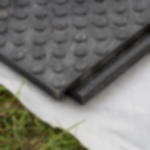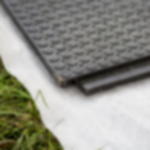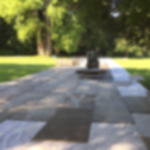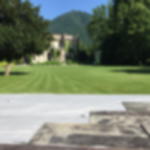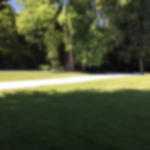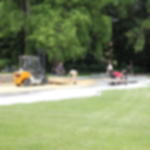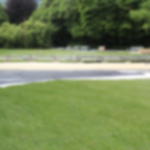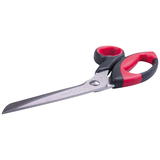geotextile | 2 x 100 m |155 g/m² | Geovlies GRK 3 | highly durable fleece for floor protection at events | drainage fleece | water-permeable geotextile, stabilising and protective
geotextile
geotextile
| Roll measures: | 2,00 m x 100 m (= 200 m²) |
|---|---|
| Roll diameter: | appr. 40 cm |
| Colour: | grey |
Geotextile is a highly durable non-woven fabric that is often used in event supplies for ground stabilisation (reinforcement). The non-woven fabric offers good stabilisation through improved load distribution and thus increased load-bearing capacity, for example for a ground protection system laid on the ground (Remopla, Rollaway, etc.).
W hen used as a separating layer between panels and a soft surface such as gravel, earth or turf , geotextiles not only reinforce the surfaces, they also provide protection. The nonwoven fabrics protect existing floor coverings ( e.g. tartan, hall flooring) from abrasion and contamination, as well as the backs of the floor protection system itself. As a separating layer, geotextile prevents residues of soil, loose gravel or turf from remaining on the underside of the panels during dismantling. In addition, the separating layer makes it easier to remove the panels from the substrate.
Geotextiles, also commonly known as weed control fabric, filter fabric or drainage fabric, are mechanically bonded nonwoven fabrics that are capable of filtering, separating and permanently draining seepage water (drainage) – allowing 100% of the water to drain away. The products have a long service life and are extremely robust. The separation fleece with robustness class GRK 3 has a weight per unit area of 155 g/m² and a thickness of 1.2 mm. Geovlies consists of UV-stabilised polypropylene, is rot-proof and has outstanding long-term stability. The material is resistant to acids and alkalis and many other chemical influences.
Youcan buy geotextile in the allbuyone shop as a roll in grey, with a roll width of 2.00 m and a roll length of 100 m.
Buy geotextiles in the allbuyone shop
What geotextiles can do and how they can be used in event supplies can be summarised as follows: the mechanically bonded nonwoven fabrics filter, separate, stabilise, reinforce and protect at the same time. Geotextile (geofleece), a UV-stabilised nonwoven fabric made of 100% polypropylene, has excellent technical properties, the best hydraulic values and , , high robustness. The non woven fabric with robustness class GRK 3 and a grammage of 155 g/m² is generally recommended by the manufacturer for applications in road construction, parking areas and construction roads. The geosynthetic nonwoven fabric has high water permeability and is rot-proof.
Geotextile is supplied in handy 2 x 100 m rolls (roll width x roll length). The roll has a diameter of approx. 40 cm and weighs approx. 31 kg.
Geotextile 200 m² roll: technical product information
Geotextiles of this type are not only suitable as a separating layer to achieve greater stability under mechanical stress, the fleece can also be used as a filter fleece, weed fleece, drainage fleece and protective fleece.
- Design: geotextile nonwoven fabric 155 g/m²
- Robustness class: GRK 3
- Material: polypropylene, UV stabilised
- Fabric: mechanically bonded, (continuous fibre) nonwoven fabrics with high elasticity
- Colour: grey
- Properties: rot-proof, water-permeable
- Durability: long service life, reusable
- Long-term resistance: resistant to all chemical and biological substances commonly found in soils and building materials (e.g. acids and alkalis)
- Temperature resistance: -40° to +80°C
- Maximum tensile strength according to EN ISO 10319 longitudinal: 11.5 kN/m
- Maximum tensile strength according to EN ISO 10319 transverse: 11.5 kN/m
- Maximum tensile force elongation according to EN ISO 10319 longitudinal: 90%
- Maximum tensile force elongation according to EN ISO 10319 transverse: 70%
- Stamp push-through force according to EN ISO 12236: 1750 Newton
- Cone drop test (hole Ø) according to EN ISO 13433: 20 mm
- Water permeability perpendicular to the plane according to EN ISO 11058: 100 l/m² s
- Opening width O 90 according to EN ISO 12956: 100 µm
- Suitability for drinking water: safe according to KTW criteria
- Plant compatibility: very good
- Dekra tested
Geotextile – dimensions and weight
- Roll length: 100 m
- Roll width: 2.00 m (4.00 m width on request)
- Roll diameter: approx. 40 cm
- Weight: 155 g/sqm
- Weight per roll: approx. 31 kg
Delivery information: For quantities up to approx. 5000 sqm, please allow 2 to 3 days for delivery (shipping within 1-2 working days). Larger quantities require a delivery time of approx. 1 week.
Geotextiles with approx. 150 g/m²: Top-quality products
The polypropylene fleece offers the best quality. The products impress with their high stability (GRK 3) and long service life. This geotextile is a non-woven fabric whose individual fibres are mechanically bonded (needled) during production. This makes the geotextile elastic and much more stable than products whose polypropylene fibres are only thermally bonded.
Please note: The geotextile offered here in the shop with 155 g/m² is ideal for separating, filtering, draining, protecting and as a weed barrier. The fleece is used for soil stabilisation by distributing tensile stresses. The manufacturer recommends the use of geotextiles of this weight and GRK 3 (robustness class of geotextiles) for example for the construction of roads and paths, terraces and driveways, for house drainage and the temporary creation of construction roads and event areas . Geotextiles with a GRK 3 are not suitable for reinforcement in motorway and railway construction .
Geotextile offers quick handling
Geotextile is often used in event applications as a separating layer between the ground and the ground protection system (e.g. Remopla, Rollaway, etc.). The fleece can be easily rolled out from the roll on site and, if necessary, secured at the edges with ground nails. However, in most cases, fastening is unnecessary as the nonwoven fabric is under tension after the panels have been laid and is therefore usually sufficiently secured. 
Geotextile: Nonwoven fabrics for separating, reinforcing, protecting and stabilising
Geotextiles are nonwoven fabrics that can be used in a variety of ways due to their properties (reinforcing, filtering, protecting, draining, separating, etc.) and are therefore also frequently used in event supplies. The geosynthetic nonwoven fabric guarantees optimum water permeability and erosion protection as a separating layer. The nonwoven fabric is suitable for drinking water and plants and is highly resilient.
Geotextile as a separating layer for clean separation of two soil layers:
Geotextiles are able to successfully prevent two soil layers from mixing. This function, which is frequently used in road and railway construction, involves the long-term separation of two layers with different physical properties. (In accordance with EN ISO standards "Prevention of mixing of adjacent different soil types and/or fill materials when using geosynthetics").
This also meets the requirements for event needs. Namely, when a floor is only to be used temporarily. Bulk material, for example, which is applied for levelling or stabilisation during the construction of temporary structures or for path construction, can be cleanly separated from each other with a geotextile separating layer. This nonwoven fabric (opening width 100 µm e – O 90 according to EN ISO 12956) guarantees optimum water permeability (100 l/m² s) and thus also prevents unwanted waterlogging. When dismantling the event, the geotextile helps to remove the fill material cleanly from the ground.
Geotextile for reinforcement and soil stabilisation
Geotextiles are an aid to reinforcement: to improve the mechanical properties of soil, geotextiles are installed between or under the soil layers to absorb tensile forces. Geotextiles of this quality are particularly effective for reinforcing and increasing the load-bearing capacity of floor protection systems for event applications. They improve the mechanical properties of the soil layers and help to form highly resilient, stable surfaces on the ground prepared with nonwoven fabric. The nonwoven fabrics also serve to stabilise the soil on soft ground and, thanks to their good water permeability , offer erosion protection at the same time. The protective effect of geotextiles is therefore based on drainage, load distribution and a buffering effect.
Geotextile solves the problem of loose material becoming embedded in soft ground due to traffic loads. Expensive composite materials (e.g. fleece + laminated lawn grid) are available for this purpose. Geotextiles are a low-cost alternative . Geosynthetic fleece can be easily and quickly applied as an additional separating layer under a lawn grid, geogrid or even under slabs.
Geotextiles protect: The fleece protects the soil and a laid soil protection system.
Building materials used for soil stabilisation at events often impair the health of lawns or other surfaces. After an event, the floor protection systems are dismantled quickly. Rubbish and debris remain on the ground. If the geotextile is laid as a separating layer between the ground and the floor protection system, acting as a protective fleece or filter fleece, the rubbish that usually remains on the ground after an event can be rolled up and removed quickly and easily together with the filter fleece.
Protection of sensitive tartan tracks or hall floors: If you have a high-quality surface that needs temporary protection, for example when slabs are to be laid for floor stabilisation or for path construction on a clean hall floor, a tennis court or a tartan track, then geotextile is also the right protective fleece. Geotextile has proven itself as a protective separating layer to successfully prevent abrasion from plastic or PVC. Another effect: the underside of the systems (e.g. Remopla, Rollaway, etc.), which is equipped with a non-slip profile , remains clean, thus avoiding time-consuming cleaning work thanks to the geotextile.
Tip from the industry: Lay geotextile in combination with foil. After an open-air event, damage to the ground is often reported. To prevent damage to the ground caused by harsh liquids (e.g. petrol, cola, etc.), the fleece can also be laid in combination with foil.
Nonwoven fabrics as filter fleece and drainage fleece
Geotextiles are ideal for filtering and drainage. If, for example, soil components or other particles need to be separated, the fleece can be used for filtering. Permeability to water and other liquids perpendicular to the plane is always guaranteed. Drainage, another application for which the separating fleece is often used, also works thanks to its water permeability of 100 litres per square metre per second.
Tackling weeds: geotextiles for use as weed control fabric
Using geotextiles for weed control is not only particularly ecological, but also extremely effective. When used correctly, weed control fabric works against weeds without the use of chemicals. The drinking water-neutral and plant-compatible polypropylene fabric maintains the natural balance of the soil. Geotextile is completely permeable to air, water and nutrients when used as a cover.
How do geotextileswork against weeds and how are they used correctly? Weed growth is prevented exclusively under the fleece – by depriving the weeds of light under the cover. Spread the geotextile over the bed as a cover and make sure that the individual strips overlap by 10 cm, or better 20 cm. The existing plants should be cut out generously in a circular shape with scissors. Done!
Use of geotextiles in other areas:
Geotextiles can also be used around the house and garden and in areas where animals are kept for separating, reinforcing, draining, filtering and protecting.
- For example, during paving work or when building terraces
- as a filter for foundations
- Securing beds on slopes
- Weed management in gardens and greenhouses
- As a base for green roofs
- As a base for laying flooring on loose ground
- As a protective fleece in pond construction
- For building the floor of stables (horse stables, riding arenas, other stables)
Buy geotextile: Best quality, good price and fast delivery in the allbuyone shop
Ground fabric as a separating layer for reinforcement and drainage. For use as a separating fleece, filter fleece, garden fleece, weed fleece and much more. Low prices, with volume discounts when ordering multiple rolls. Personal advice on +49 89-122 89 06 22.












